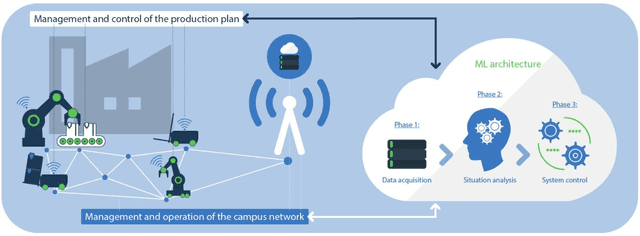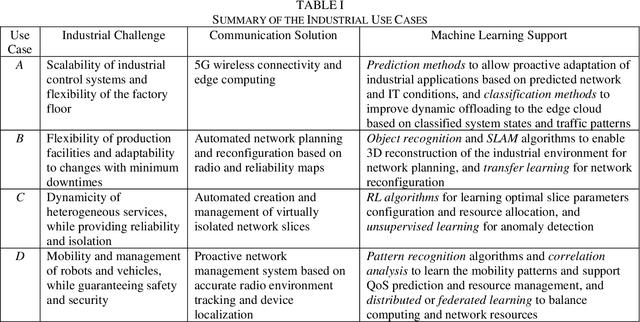Hans Schotten
A Review of Multiple Access Techniques for Intelligent Reflecting Surface-Assisted Systems
May 16, 2024Abstract:Intelligent Reflecting Surface (IRS) is envisioned to be a technical enabler for the sixth-generation (6G) wireless system. Its potential lies in delivering high performance while maintaining both power efficiency and cost-effectiveness. Previous studies have primarily focused on point-to-point IRS communications involving a single user. Nevertheless, a practical system must serve multiple users simultaneously. The unique characteristics of IRS, such as non-frequency-selective reflection and the necessity for joint active/passive beamforming, create obstacles to the use of conventional multiple access (MA) techniques. This motivates us to review various MA techniques to make clear their functionalities in the presence of IRS. Through this paper, our aim is to provide researchers with a comprehensive understanding of challenges and available solutions, offering insights to foster their design of efficient multiple access for IRS-aided systems.
Orthogonal and Non-Orthogonal Multiple Access for Intelligent Reflection Surface in 6G Systems
Mar 15, 2023Abstract:Intelligent reflecting surface (IRS) is envisioned to become a key technology for the upcoming six-generation (6G) wireless system due to its potential of reaping high performance in a power-efficient and cost-efficient way. With its disruptive capability and hardware constraint, the integration of IRS imposes some fundamental particularities on the coordination of multi-user signal transmission. Consequently, the conventional orthogonal and non-orthogonal multiple-access schemes are hard to directly apply because of the joint optimization of active beamforming at the base station and passive reflection at the IRS. Relying on an alternating optimization method, we develop novel schemes for efficient multiple access in IRS-aided multi-user multi-antenna systems in this paper. Achievable performance in terms of the sum spectral efficiency is theoretically analyzed. A comprehensive comparison of different schemes and configurations is conducted through Monte-Carlo simulations to clarify which scheme is favorable for this emerging 6G paradigm.
Resource Allocation with Stability Constraints of an Edge-cloud controlled AGV
Jan 23, 2023Abstract:The paper proposes Resource Allocation (RA) schemes for a closed loop feedback control system by analysing the control-communication dependencies. We consider an Automated Guided Vehicle (AGV) that communicates with a controller located in an edge-cloud over a wireless fading channel. The control commands are transmitted to an AGV and the position state is feedback to the controller at every time-instant. A control stability based scheduling metric 'Probability of Instability' is evaluated for the resource allocation. The performance of stability based RA scheme is compared with the maximum SNR based RA scheme and control error first approach in an overloaded and non-overloaded scenario. The RA scheme with the stability constraints significantly reduces the resource utilization and is able to schedule more number of AGVs while maintaining its stability. Moreover, the proposed RA scheme is independent of control state and depends upon consecutive packet errors, the control parameters like sampling time and AGV velocity. Furthermore, we also analyse the impact of RA schemes on the AGV's stability and error performance, and evaluated the number of unstable AGVs.
Leveraging Machine Learning for Industrial Wireless Communications
May 05, 2021


Abstract:Two main trends characterize today's communication landscape and are finding their way into industrial facilities: the rollout of 5G with its distinct support for vertical industries and the increasing success of machine learning (ML). The combination of those two technologies open the doors to many exciting industrial applications and its impact is expected to rapidly increase in the coming years, given the abundant data growth and the availability of powerful edge computers in production facilities. Unlike most previous work that has considered the application of 5G and ML in industrial environment separately, this paper highlights the potential and synergies that result from combining them. The overall vision presented here generates from the KICK project, a collaboration of several partners from the manufacturing and communication industry as well as research institutes. This unprecedented blend of 5G and ML expertise creates a unique perspective on ML-supported industrial communications and their role in facilitating industrial automation. The paper identifies key open industrial challenges that are grouped into four use cases: wireless connectivity and edge-cloud integration, flexibility in network reconfiguration, dynamicity of heterogeneous network services, and mobility of robots and vehicles. Moreover, the paper provides insights into the advantages of ML-based industrial communications and discusses current challenges of data acquisition in real systems.
 Add to Chrome
Add to Chrome Add to Firefox
Add to Firefox Add to Edge
Add to Edge